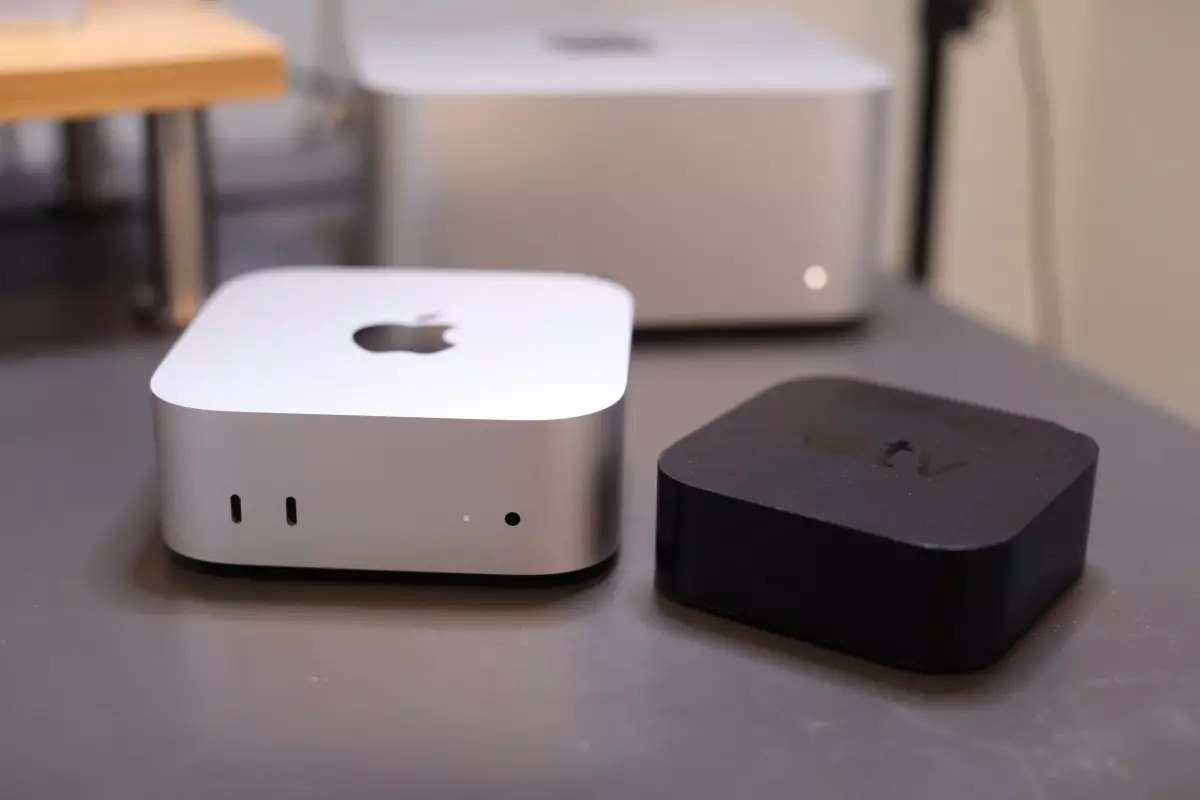The Mac Mini has long occupied a unique, and often disregarded, position within Apple’s desktop portfolio. While the iMac and Mac Pro have received significant updates and attention, the Mini remained an afterthought for years, struggling to find its place within an otherwise robust lineup. With the introduction of the fresh M-series chips in 2020, Apple reignited interest in the Mini, setting the stage for what could be its most significant evolutionary leap in over a decade.
Since its original launch in 2005, the Mac Mini has largely retained its original design and aesthetic. However, the announcement of the latest model brings a long-overdue redesign that aligns it more closely with Apple’s modern design language. The new model, while reminiscent of the Mac Studio, offers a smaller yet more functional footprint that reflects Apple’s attention to both form and function.
Measuring at 5 x 5 x 2 inches, the Mini retains a compact profile but is notably larger than the Apple TV 4K, dispelling early rumors of a diminutive reimagination. The brushed aluminum finish, combined with smooth edges, embodies the premium feel typical of Apple products, signaling a commitment to quality design. Yet, despite its stylish appearance, the Mini has fewer ports compared to the more robust Studio, including three Thunderbolt ports and USB-C options, catering to a minimalist setup that may not satisfy all professional needs.
At the core of the new Mac Mini are the M4 and M4 Pro chips, promising to deliver enhanced performance across a variety of applications. The entry-level configuration starts at an appealing $599, but adding higher specifications significantly escalates the price, with models reaching up to $4,699. The review unit features the M4 Pro configuration with considerable RAM and storage, placing it in a competitive price range amidst other high-performance Macs.
While the M series chips have been celebrated for their efficiency and power, there remains a critical acknowledgment that a newer chipset does not always equate to better performance in all scenarios. The expectations surrounding the M4 chip and its capabilities remain contingent upon the type of workloads users intend to execute. For casual users, the base model may suffice, but professionals demanding high-caliber performance may find themselves compelled to choose the Pro version instead.
One prominent aspect to consider when evaluating the Mac Mini is its portability—or lack thereof. As a desktop machine, the Mini provides significant power without the full-fledged monitor and built-in capabilities of an all-in-one iMac. The compact size allows it to fit comfortably in workspaces, making it an attractive option for users with limited desk arrangements.
Nevertheless, it’s important to note that while the Mini offers an exceptionally sleek design, it still does not facilitate the on-the-go functionality that a MacBook can provide. If true mobility is a priority, the MacBook offers an unparalleled combination of portability and performance, especially when outfitted with the latest chips.
In the crowded landscape of Apple products, the Mac Mini appears to carve its own niche, appealing primarily to those who are ready to upgrade their existing configurations yet are hesitant to invest in a higher-end machine like the Mac Studio. It caters to users who appreciate the flexibility of selecting their own monitors and peripherals but wish to avoid the built-in limitations typical of all-in-one designs.
As Apple continues to adopt more advanced technology into their products, the appeal of the Mini shifts. It will likely see substantial interest from enterprise environments, where teams look to acquire devices in bulk without compromising on performance and capacity. However, Apple is faced with the challenging task of clearly defining the Mini’s market segment, especially given the availability of alternative devices that may fit consumer or professional needs more succinctly.
Ultimately, while the new Mac Mini represents commendable progress in design and technology, it still faces questions regarding its unique position within Apple’s wider desktop offerings. It is not a bad machine—far from it—but it may leave potential customers wondering if this compact powerhouse is their best option, especially considering the alternative offering of the iMac and the robustness of the Mac Studio.
If the Mac Mini aligns with your user profile and you already possess a high-quality monitor, it could be an excellent choice. However, for consumers still undecided, evaluating other products in Apple’s ecosystem may yield a more fitting solution to meet their requirements and budget. The allure of the new Mac Mini is undeniable; it simply needs to stake a clearer claim in the competitive marketplace.


Leave a Reply